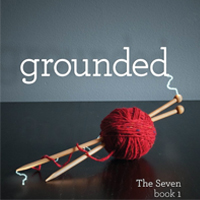Chapter 3.3—The Good Side
Future thinking and creative thinking and non-spontaneous mind-wandering today.
All good stuff.
So, the researchers don’t seem to have a positive why, but it looks like they think that the un-demanding nature of doodling—or, as I posit, something like vanilla knitting or crochet—may reduce daydreaming or spontaneous mind-wandering simply by keeping you awake and keeping your mind off of any discomforts that—as per 1885’s study—would otherwise have led to that pesky spontaneous decoupling… which then would lead to fidgeting… and then begin the unpleasant struggle for attention.
The upshot is that doodling and automatic handicrafts are relatively undemanding of our executive resources. They’re self-paced, repetitive and they involve little performance monitoring or any need for verbal processing resources—that is, they don’t strain your brain’s bandwidth. The combination of doodling or automatic knitting plus listening engages the brain’s executive resources that coordinate verbal and visuo-spatial short-term memory.
In English?
If you’re knitting and listening, you simply don’t have enough brain left for daydreaming. You don’t have room to let daydreaming engage your cortex.
And this next bit is important (and you probably won’t like it):
This is why surfing the web or your phone or knitting complex lace doesn’t play nice with paying attention to a conference call. Surfing the web is 100% visual. That pulls out too much brain bandwidth—and the first thing to go will be the thing that bores you.
But I’m not sorry that we now know for certain what can keep workers and students engaged and focused using a very simple trick—automatic, productive handwork like doodling, knitting, crocheting.
But what if you don’t have a primary task you’re supposed to be attending to? What if you’re not at a staff meeting?
What if you’re just… you know… knitting.
That’s where the really good stuff happens!
Embrace the Wander
So we know that Spontaneous Mind Wandering in a meeting is bad—it’s when your brain drags you away from what you should be listening to and it gets you upset and makes your day lousy. But what if you’re engaged in the correct task but you’re stuck? What if you have run up against a problem your conscious mind can’t solve?
Knit!
Knit and this time let your mind wander!
Dr. Benson wrote a book called The Breakout Principle where he talks about “triggers”—of which knitting is one—that help you breakout of a negative cycle…. like, for instance, an unsolvable problem.
What he found was that low-stress physical occupations lead to AH HA! moments.
Like when Archimedes (so the story goes) made his big discovery in a bath (EUREKA-water displacement!). This accidental problem-solving seems to work well especially if you’ve been failing at the task.
Doing nothing will not help to solve the problem. But crochet for awhile, let the problem percolate, and BOOM!
Problem solved!
Because an undemanding or automatic task also happens to be the thing that maximizes the occurrence of positive mind-wandering.
Alleluia!
As I’m sure we all know, tedious moments—waiting in line, waiting in airports and doctor’s offices, soccer practice—all are mitigated by and less stressful when having knitting in hand. And now we know that it doesn’t just keep us calm—it could also help us problem-solve difficult tasks by allowing positive and deliberate mind-wandering (which puts us in a good mood and makes us more productive and puts us in Shawn Achor’s positive place).
So there you have it! Go forth and feel good about being stuck. Knit on and know the answer will come to you! Zentangle to your heart’s content while percolating on a pesky problem knowing that it won’t stay that way for long!
4 Comments
















Do you have a Facebook page associated with this blog?
I do now!
https://www.facebook.com/CognitiveAnchoring
I am hoping to incorporate some of these ideas in a class I’m teaching about meditation using the labyrinth. Consequently, I was struck by
low-stress physical occupations lead to AH HA! moments.
Walking, for most of us, is definitely a low-stress physical occupation, and walking a labyrinth provides some automaticity – the path is laid out for you and is narrow enough to keep you on it. It’s sort of like your vanilla socks; you don’t have to wonder if a dog will come across your path or whether you should turn left at the next corner. You can just follow the path and let your mind work on what you want (a solution to a problem, a mantra, a visualization).
What a lovely image!!! Yes!!!!